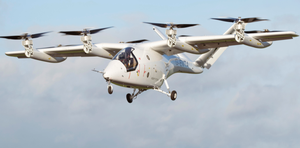How IIC’s Microgrid Technology Testbed Supports Green EnergyHow IIC’s Microgrid Technology Testbed Supports Green Energy
An Industrial Internet Consortium testbed for microgrid technology demonstrates a path forward for many organizations that want increased freedom from the grid.
February 23, 2018

The solar industry is booming. In 2015, the number of workers in the U.S. solar energy industry surged ahead of those of the oil and gas industry for the first time. In addition, the cost of solar power has fallen so steeply that is competitive with traditional energy sources.
Despite the growing amount of buzz surrounding solar energy, it is still a minor energy source, comprising roughly 1 percent of U.S. power. Even among renewable energy sources, solar ranks fourth after hydropower (comprising 6.5 percent of the total of U.S. power in 2016), wind (5.6 percent) and biomass (1.5 percent).
Yet as the share of solar power — and renewable energy in general — grows, it poses potential problems for the aging traditional electrical grid but could be a boon for IoT-fueled microgrid technology. This article explains what these difficulties are and how a microgrid project developed by members of the Industrial Internet Consortium could help tackle them.
The Challenge of Going “Off the Grid”
There’s a widespread assumption that buildings with rooftop solar can operate independently from the power grid. But natural disasters, such as Hurricane Sandy and last year’s fires in Wine Country, have served as wake-up calls that such solar-powered structures are part of the grid, often generating excess energy in the day while needing it at night. Wind power, of course, fluctuates as well.
The dynamic nature of renewable power also forces organizations using large amounts of renewable energy to either invest in battery technology to access power at off-peak times or continue receiving power from the grid.
In both cases, there is a need for phase lock between distributed energy sources (like solar and wind power as well as batteries) and the centralized structure of the power grid, where the frequency from the distributed source is synchronized with that of the traditional grid. This coordination is necessary because distributed energy resources use direct current (DC) while the standard for the U.S. grid is alternating current (AC). To bridge the two requires each distributed power supply to have an inverter to match the AC signal on the grid. If the inverter works properly, two generators can efficiently make use of the energy from the distributed sources, but when the signal between the two are out of phase, they fight against each other.
[Internet of Things World is where IoT is put into action, demonstrating the best case studies for every vertical, from manufacturing to the smart home. Get your tickets and free expo passes now.]
“If they are out of phase enough, they cause blackouts and fires,” said Stan Schneider, PhD, CEO of Real-Time Innovations, one of the Industrial Internet Consortium members advancing the technology along with fellow IIC members National Instruments, Wipro and Cisco as well as partners like Oak Ridge National Labs, Duke Energy and CPS Energy. “It is difficult to keep phase lock on solar cells.”
Preparing the Grid for Renewables with Microgrids
One central strategy to avoid limitations of the traditional power grid is microgrid technology, which collects energy from distributed sources but is also connected to a centralized power grid. Typical microgrid applications nclude remote villages, campuses, hospitals and far-flung military bases that can operate independently from the grid if need be.
But while there is demand for such microgrids to be “green,” many rely heavily on diesel generators. Part of the reason for this goes back to the challenges of phase lock. “There is no kind of baseline DC signal to follow unless you also have a diesel generator producing at least 60 percent of the power in that microgrid,” said Brett Murphy, director of business development, Industrial IoT at RTI. “If you have more than 40 percent of these DC inverter-based distributed energy resources from devices like solar and batteries, they tend to start to fight each other and get out of phase.”
In 2015, RTI and its IIC partners began researching the use of IIoT technology to tackle the microgrid time lock problem. The central strategy is to transition from microgrids with controllers that don’t communicate to microgrids with controllers that do. But beyond that, the end goal is to imbue the controllers with intelligence to be able to make decisions on the fly.
To make the goal a reality, the IIC testbed members are making use of time-sensitive networking (TSN), an emerging Ethernet technology that has a precise time synchronization signal. This precision enables the testbed team to monitor and sync up the frequency of inverters in a microgrid. The testbed team also make use of the new Open Field Message Bus (OpenFMB) standard, which is dedicated to providing a shared data and security models while supporting interoperability and distributed intelligence at the edge of the power grid. “OpenFMB looks at the more general issue of edge devices such as sensors, actuators and so forth — including microgrid inverters,” Murphy explained. “With OpenFMB, you can take everything you can get out of your solar arrays and put the battery in charge mode. If the utility calls and says: ‘We are in trouble. Can you please stop charging your battery and put power onto the grid for us?’ You can handle that using the microgrid-level control that OpenFMB provides,” Murphy explains.
“Duke has a great demo of OpenFMB,” Schneider said. They can throw a switch and their microgrid is islanded,” he added, referring to the state where a distributed generator continues to offer power in the absence of power from the grid. “And they put the switch back down and it is un-islanded. Anybody watching it will say: ‘Nothing happened.’ And maybe that is the point!” he said. “If you are a power person, you say: ‘How did they do that? That is impossible.’”
Today, the IIC microgrid team is at the stage of working to sketch out a utility proof of concept project. “While the IIC vets and approves all testbeds, they do not own the results. Each testbed team is run by the team members and each team works out its own IP ownership and commercialization plans, For the microgrid tested, Wipro is taking the lead in approaching customers and delivering the solution while NI and RTI license our components through Wipro,” Murphy said. “We don’t have a field deployment yet, but in the short term, I can see that business professionals such as factory owners and managers of college and corporate campuses, for instance, could be interested in the technology,” Murphy added. “Let’s say they install a bunch of solar and have a diesel backup generator and a battery, and then they want to control all of that so that they uninterrupted less expensive power than what they can get off the grid.”
About the Author
You May Also Like
.png?width=700&auto=webp&quality=80&disable=upscale)





